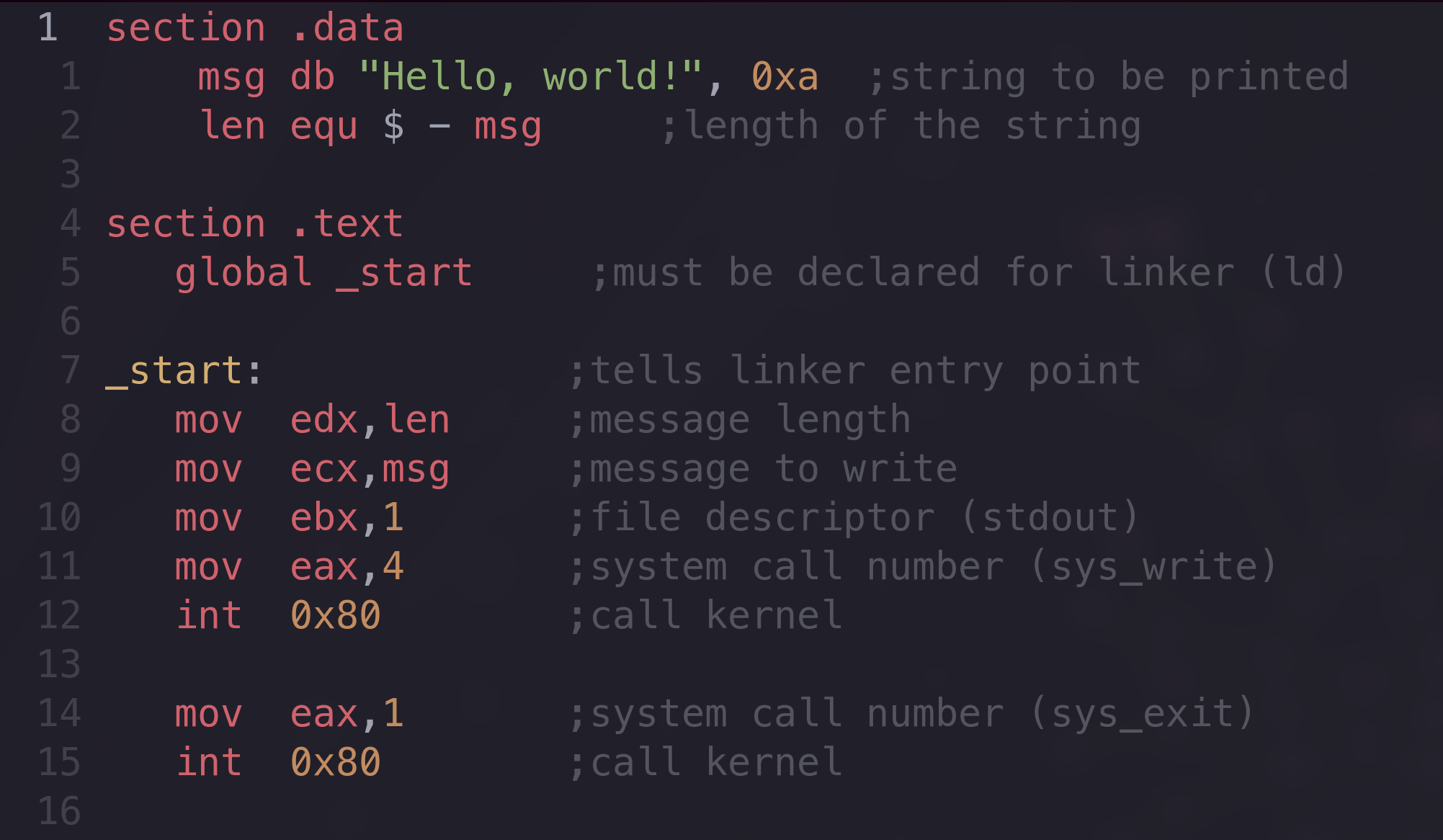x86 NASM Assembly - Hello World Explained
 0ussamaBernou
0ussamaBernouTable of contents

In this post, we'll take you on a step-by-step journey through a classic "Hello, World!" assembly program. We'll break down each line of code.
Introduction
First, let's clarify a few essential concepts. In assembly, comments are denoted by a semicolon
;, allowing us to add explanations to our code without affecting its functionality. To display text on the screen, we'll utilize the system callsys_write.- using system call
sys_write
- using system call
mov edx,len ; message length
mov ecx,msg ; message to write
mov ebx,1 ; file descriptor 1 (stdout)
mov eax,4 ; system call number 4 (sys_write)
int 0x80 ; call kernel
for more info: assembly system calls
The Breakdown
section .data
msg db "Hello, world!", 0xa ;string to be printed
len equ $ - msg ;length of the string
section .text
global _start ;must be declared for linker (ld)
_start: ;tells linker entry point
mov edx,len ;message length
mov ecx,msg ;message to write
mov ebx,1 ;file descriptor 1 (stdout)
mov eax,4 ;system call number (sys_write)
int 0x80 ;call kernel
mov eax,1 ;system call number 1 (sys_exit)
int 0x80 ;call kernel
section .data− this section is where static variables are definedmsg db "Hello World!", 0xA− declaring a variable of bytes containing "hello world!" and the line feed character '0xA' or 10 in decimal and storing its address inmsglen equ $ - msg− getting the length ofmsgby subtracting its address from the value of the current address
section .text− this section is where the program instructions are locatedglobal _start− to declare the entry point of our program
_start− tell the linker this is our entry pointmov edx, len− storemsglength in the registeredxmov ecx, msg− storing the hello world string in the registerecxmov ebx, 1− setting file descriptor to 1 (stdout)mov eax, 4− setting system call 4 (sys_write)int 0x80− calling the kernel to take actionmov eax,1− setting system call 1 (sys_exit)int 0x80− calling the kernel again
And that's what a hello world program looks like in assembly.
Compiling
to compile this program, two steps are needed assembling and linking:
First, make sure you have the assembler
nasmand the linkerldinstalled in your system.
to install nasm on Ubuntu type
sudo apt install nasm, on other platforms check this link assembly environment setupld comes preinstalled on most operating systems
assembling:
to assemble the program considering it's in a file called "hello.asm" we use the command
nasm -f elf hello.asmif no errors occured, an object file
hello.owill be created in the same directory
Linking:
- to link our object file into an executable we use this command
ld -m elf_i368 -o hello hello.o
- to link our object file into an executable we use this command
Alternatively, you can run it online Here.
Thanks for reading!
Subscribe to my newsletter
Read articles from 0ussamaBernou directly inside your inbox. Subscribe to the newsletter, and don't miss out.
Written by
